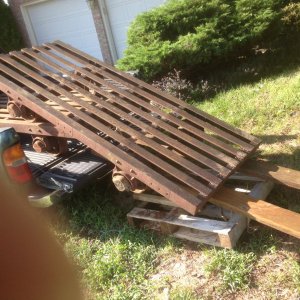I've been told by a railroad restorer to use liberal amounts of kroil. I'm building a 2' gauge railroad and have several kiln cars that were left out in the elements for decades without movement or lubrication. The rollers are seized and wheels won't turn. Before taking the pedestals apart I'm thinking to buy a gallon of kroil.
Just wanted to check here before doing anything.
Thanks

Just wanted to check here before doing anything.
Thanks


